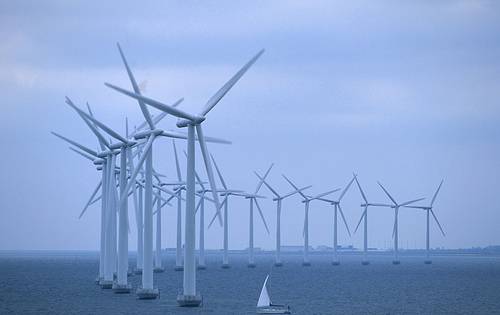Last Monday, October 11th, Columbia University’s Earth Institute and the Consulate General of Denmark co-hosted “The Climate Challenge: Revitalizing the Debate”. The daylong symposium included three panel sessions, in which experts from academia, the private sector, government and non-governmental organizations discussed the effects and implications of global climate change as well as steps –both taken and proposed– to counteract it.

One of the overarching topics in these discussions was the report recently released by the Danish Commission on Climate Change that revealed a plan to make Denmark completely independent of fossil fuels by 2050.
Should the plan succeed, it would make Denmark the world’s first fossil-free country, a title even more impressive than that pursued by Vatican City, which in 2007 announced its intention to become the world’s first carbon neutral state. Denmark’s target seems even more impressive upon examination of the nation’s existing energy portfolio; currently, more than 80% of Danish energy comes from coal, oil, and natural gas.
The Commission’s proposal has two main goals: first, to reduce emissions of greenhouse gasses into the atmosphere; second, to provide a means of avoiding the economic, political, and social consequences of decreasing supplies of fossil fuels. The DCCC conducted its research and formed its policy suggestions based on the assumption that fluctuations in the price of fossil fuels will become more common and that consequently, not transitioning away from these energies would inhibit Denmark’s economic stability and growth in the future.
At Monday’s conference, Katherine Richardson, chairman of the DCCC, spoke openly to the audience as she explained the steps that would allow for this herculean recreation of the Danish energy system. Ms. Richardson listed three caveats to the implementation process: first, conversion must begin immediately and proceed gradually; second, current energy infrastructure should be replaced when it has completed its lifespan but not before then; and third, the Danish government must give businesses and citizens financial reasons to support the conversion.
Ultimately, Richardson posited that physically completing this process would be relatively low cost (the DCCC suggested that the Danish government immediately start allocating .5% of GDP to the transition process, which would amount to 17 billion USD by 2050) and would provide substantial savings in the long run by obviating ever more expensive fossil fuels. Additional benefits outlined in the Commission’s report included decreased overall energy consumption due to increased efficiency, economic growth via the expansion of green technologies and industries, and smaller proportional budgetary allocations for energy expenditures.

Laudably, the report does not make these remarkable suggestions without discussing how Denmark might achieve them. The Commission’s report lists the seven most important aspects of Denmark’s future energy system in this order: there must be a large increase in wind-power capacity; biomass will play a pivotal role in the nation’s energy portfolio; various renewable energy sources will supplement national demand as needed; intelligent electricity systems will ensure incorporation of alternative energy sources; the northern European electricity market must be further integrated; the transport sector must be converted to electricity and bioenergy; and finally, small-scale heating with electric heat pumps must become more widespread.
In developing steps to achieve a fossil-free Denmark by 2050, the Commission operated under some “governing conditions”, perhaps the most important of which are that society must be able to continue to develop and that transitions to new energy systems must be socio-economically optimized. In keeping these considerations on societal progress in the foreground, the Commission ensured that their research and ultimate policy suggestions cannot be dismissed (by either the international community or the Danish government) on the grounds that they would threaten the economic well being of Denmark and its people.

One of the most simultaneously exciting and daunting considerations brought about by Monday’s conference, however, did not deal with the specific steps Denmark will take in the next forty years or the manner in which the Commission went about formulating their proposal to the Danish government. Instead, it was something that, while perhaps not discussed at length, was certainly on the minds of everyone in the room: is the international community ready, willing, and able to extrapolate from the Danish example and work towards large-scale change?
The answer to that question, of course, remains alarmingly uncertain, as the Earth Institute’s Jeffrey Sachs pointed out on Monday. One thing, however, seemed certain at the end of the day – Denmark is a small country making huge leaps but it can’t clear the hurdle of climate change by itself. For that to happen, global cooperation – of the magnitude environmentalists the world over had hoped to see at Copenhagen last year – is urgently needed but remains woefully absent.




[…] on climate will shape to be. He lauds efforts by European countries and specific energy plans like the one Denmark has proposed as models by which nations should follow. http://www.vimeo.com/16283206 […]